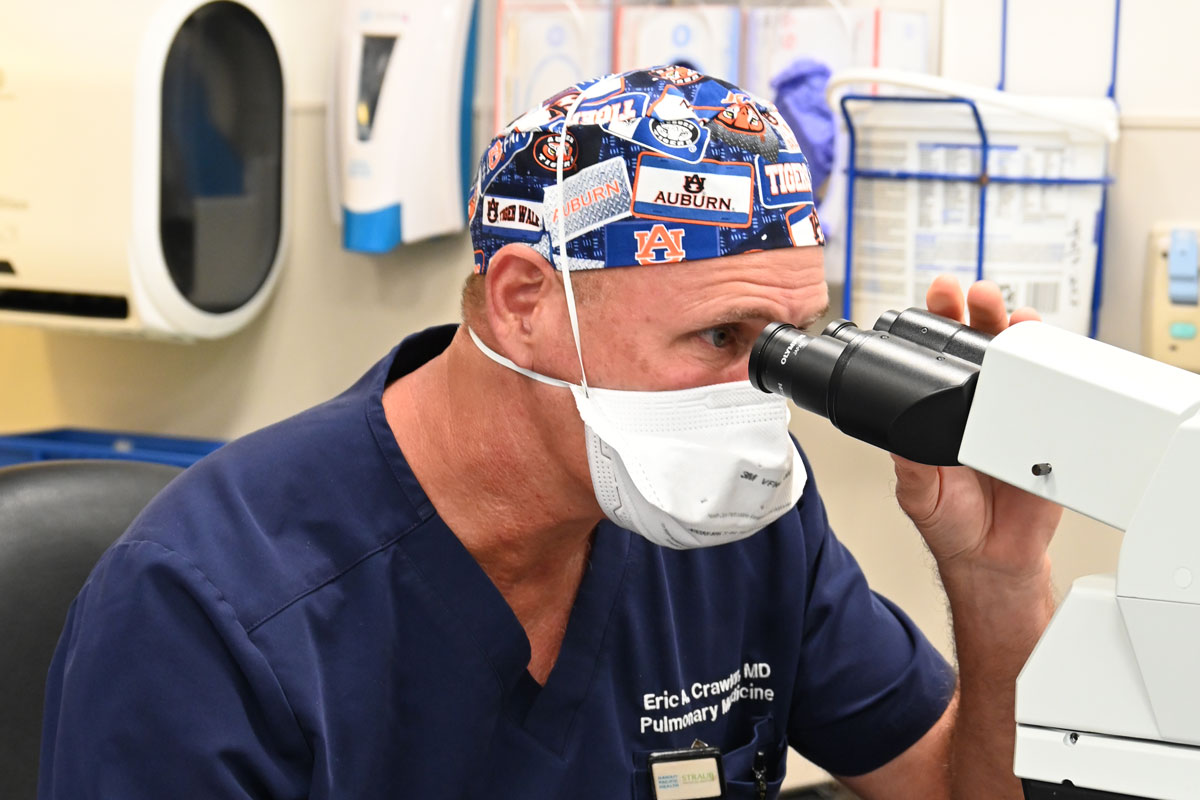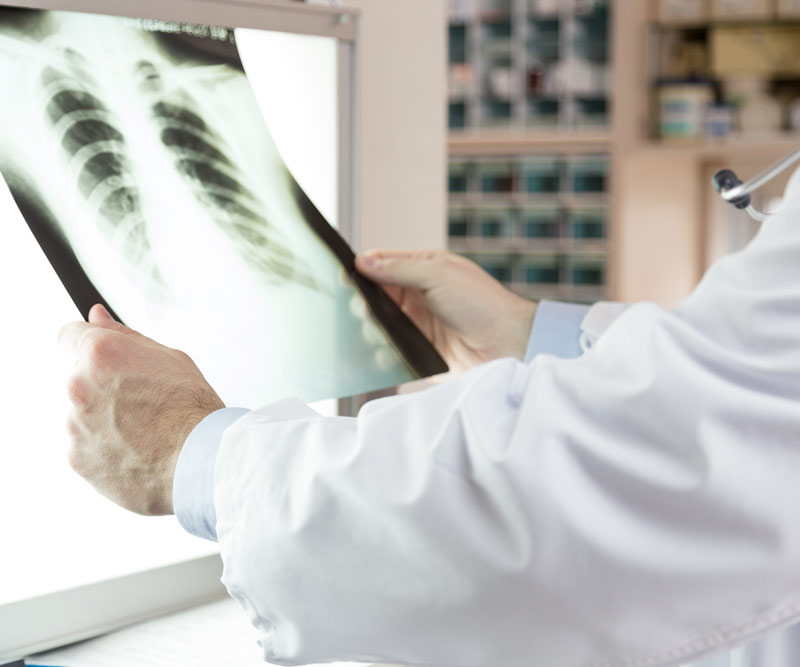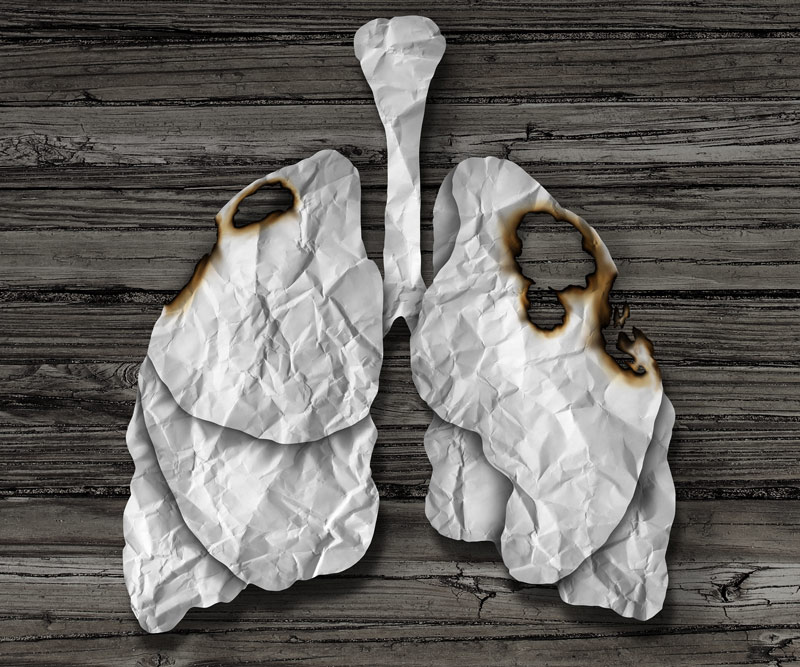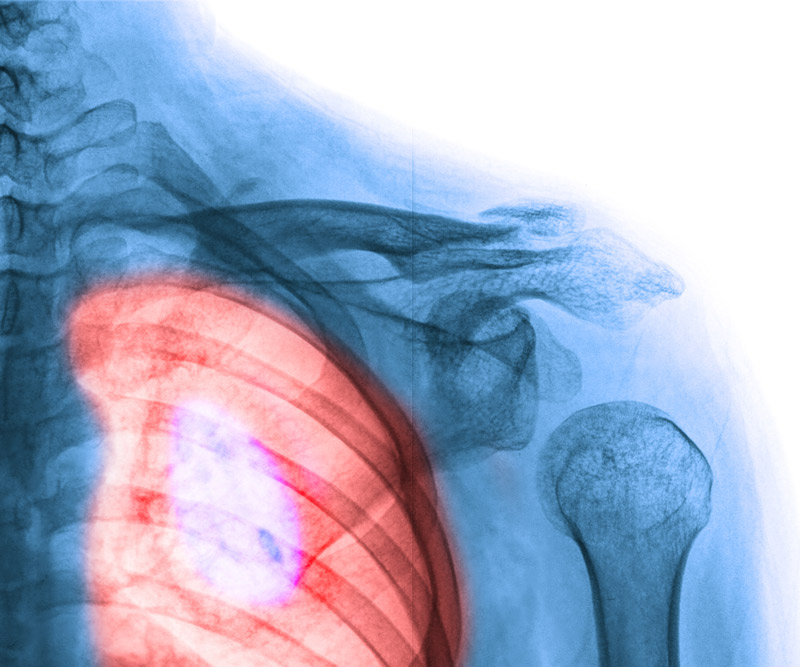
Taking the Fight to Lung Cancer
Lung cancer is among the leading causes of death in the United States. Hawaii Pacific Health Medical Group pulmonologist Dr. Eric Crawley seeks to enlighten the public about the deadly illness.
Crawley specializes in minimally invasive ways to screen for the disease and is highly qualified to provide care to his patients. He has more than 25 years of experience, joined Hawaii Pacific Health in 2015, and is an assistant clinical professor at University of Hawaii’s John A. Burns School of Medicine. Crawley is now based at Pali Momi Medical Center to improve access for patients in Central and West Oahu.
Crawley notes that lung cancer continues to be a concern in Hawaii. The American Lung Association ranks Hawaii sixth highest in the nation when it comes to the number of new cases of lung cancer diagnosed every year. However, Crawley emphasizes that screening, treatment and hope are improving for the outlook on this disease.
Here's what else Crawley had to say about his duties and the nature of lung cancer.
What do you do as a pulmonologist?
We diagnose and treat lung conditions which cause coughing, shortness of breath, chest pain. We also identify the cause of abnormal findings on chest imaging like lung nodules, or spots, masses or scarring. Many of us also take care of sleep apnea and other sleep disorders.
What treatments are your patients typically seeking?
Most patients come to find solutions for common symptoms like shortness of breath or coughing. Many are referred for more insight on findings from their chest X-rays or computerized tomography (CT) scans such as a nodule.
What should people know about lung cancer?
Lung cancer is a tremendous problem in Hawaii and worldwide. It is the No. 1 cancer killer of men and women and kills more Americans than breast, colon and prostate cancer combined.
There is, however, hope. We can dramatically reduce lung cancer deaths by reducing risk factors including smoking, and by identifying cancer at an early and more curable stage.
Early detection of lung cancer increases survival and cure rates. However, this means not just waiting for symptoms to develop. Lung cancer patients often do not feel the effects until the cancer is advanced and has spread.
Recently, the criteria for who can be screened for lung cancer has changed. What does that mean for patients?
This is extremely important to share. Federal regulations do require insurance plans to cover screenings, with a few exceptions, if you meet the age and smoking history criteria. Recently the U.S. Preventive Services Task Force recommended reducing both requirements. People can qualify for free annual screenings at age 50 instead of 55. These changes mean many more people – especially women and minorities, who may smoke less but are often at higher risk of lung cancer – eligible for screening.
What happens when a patient has a screening CT and something is found?
Understandably, most are very worried that finding something means they have cancer. It is very important to me to spend time sitting down with every patient to review the pictures and talk them through any concerns. Many factors are reviewed including smoking history, the appearance of the spot on the CT, family history and other variables to come up with an estimate of risk. Then we decide how to proceed.
Sometimes that entails a second scan in three to six months, other times it is a biopsy procedure. Fortunately, most lung nodules are not cancerous and do not need to be biopsied.
What are minimally invasive cancer confirmation options available to people in Hawaii?
Technology has advanced very quickly in the past five to 10 years, giving us new and less invasive options. My passion has been finding ways to perform biopsies that are as painless and minimally invasive as possible. With the use of navigational and robotic platforms, as well as ultrasound probes on cameras, there are very few nodules we can’t safely biopsy in the lung with minimal discomfort for patients. In experienced hands, a diagnosis can be made with these technologies in outpatient procedures 90% of the time.
Are there any other messages you want people to know about lung cancer?
People should know that at Hawaii Pacific Health and our peer systems, cancer patients are treated by a team of professionals – chest surgeons, radiation oncologists, medical oncologists, pulmonologists, pharmacists, nurse navigators and many others. These are bright people who are always seeking creative solutions.
My oncology colleagues keep finding new and less toxic ways to treat lung cancer – surgeons can remove tumors through tiny incisions and radiation doctors can precisely direct radiation to the target without damaging normal tissue around it.
Treatment plans are tailored to the actual DNA of the patient’s tumor, which allows for more focused therapy and a higher probability of success.
Immunotherapy, which uses the patient’s own immune system to fight cancers, has been revolutionary.
There are a lot of reasons to be hopeful and to screen for this potentially curable cancer.
This article was first featured in the Oct. 26, 2022, issue of MidWeek as a part of the "Dr. in the House" series. See the full publication here.
Published on: November 29, 2022




